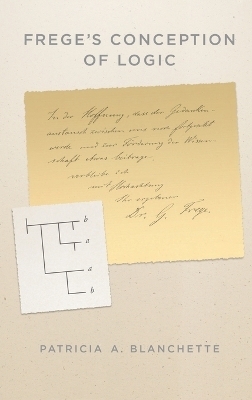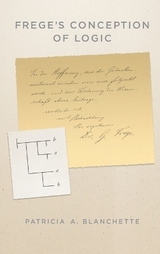Frege's Conception of Logic
Oxford University Press Inc (Verlag)
978-0-19-989161-0 (ISBN)
The first part of the book locates the role of conceptual analysis in Frege's logicist project. Blanchette argues that despite a number of difficulties, Frege's use of analysis in the service of logicism is a powerful and coherent tool. As a result of coming to grips with his use of that tool, we can see that there is, despite appearances, no conflict between Frege's intention to demonstrate the grounds of ordinary arithmetic and the fact that the numerals of his derived sentences fail to co-refer with ordinary numerals.
In the second part of the book, Blanchette explores the resulting conception of logic itself, and some of the straightforward ways in which Frege's conception differs from its now-familiar descendants. In particular, Blanchette argues that consistency, as Frege understands it, differs significantly from the kind of consistency demonstrable via the construction of models. To appreciate this difference is to appreciate the extent to which Frege was right in his debate with Hilbert over consistency- and independence-proofs in geometry. For similar reasons, modern results such as the completeness of formal systems and the categoricity of theories do not have for Frege the same importance they are commonly taken to have by his post-Tarskian descendants. These differences, together with the coherence of Frege's position, provide reason for caution with respect to the appeal to formal systems and their properties in the treatment of fundamental logical properties and relations.
Patricia A. Blanchette is Associate Professor of Philosophy, University of Notre Dame
Acknowledgements ; Introduction ; Chapter 1 - Logicism and Conceptual Analysis ; 1.1 Introduction to Analysis and Proof ; 1.2 Analysis and Proof in 1879 ; 1.2.1 Derivation, Proof and Definition ; 1.2.2 Conceptual Analysis ; 1.3 Analysis in 1881 ; 1.4. Analysis in 1884 ; 1.5 Grundgesetze ; 1.6. The General Picture ; Chapter 2 - Thoughts ; 2.1 Thoughts and Language ; 2.2 Sense and Reference ; 2.3 The Structure of Sense ; 2.4 Thoughts and Language Again ; 2.5 Where we are ; Chapter 3 - Thoughts and Sharp Boundaries ; 3.1 The Issue ; 3.2. The Texts ; 3.3 Piecemeal Definition and New Objects ; 3.4 Ordinary Discourse ; 3.5 Caesar ; 3.6 Quantification ; 3.7 Conclusion ; Chapter 4 - The Analysis of Arithmetic ; 4.1 - The Issue ; 4.2 Analysis as Thought-Preserving? ; 4.3 Reference-Preservation and Analysis ; 4.4 Dummett on What's Preserved ; 4.5 What's Preserved ; 4.5.i The Case of Directions ; 4.5.ii. Numbers ; 4.5.iii - Arithmetic ; 4.5.iv Alternative Reductions ; 4.6 Conclusions ; Chapter 5 - Analysis and Consistency: The Case of Geometry ; 5.1 Introduction ; 5.2 Frege-Hilbert ; 5.3 Hilbert's Method ; 5.4 Frege's Objections ; 5.5 Consistency and Concepts ; 5.6 Analysis and Consistency ; 5.7 The 1906 Passage ; 5.8 Ultimate Analyses? ; 5.9 Concluding Remarks ; Chapter 6 - Frege and Models ; 6.1 Models and Consistency ; 6.2 Models and Entailment ; 6.3 Implications ; 6.4 Summing Up ; Chapter 7 - Metatheory ; 7.1 Frege's Metatheory ; 7.2 Universalism and Metatheory ; 7.2.i - The Issue ; 7.2.ii - Internal Tensions ; 7.3 - Soundness, Completeness, and Consistency ; 7.4 Categoricity ; 7.5 Conclusion ; Chapter 8 - Conclusion ; Bibliography
| Erscheint lt. Verlag | 31.5.2012 |
|---|---|
| Verlagsort | New York |
| Sprache | englisch |
| Maße | 236 x 155 mm |
| Gewicht | 408 g |
| Themenwelt | Geisteswissenschaften ► Philosophie ► Geschichte der Philosophie |
| Geisteswissenschaften ► Philosophie ► Logik | |
| Geisteswissenschaften ► Philosophie ► Philosophie der Neuzeit | |
| Geisteswissenschaften ► Philosophie ► Sprachphilosophie | |
| Mathematik / Informatik ► Mathematik | |
| ISBN-10 | 0-19-989161-3 / 0199891613 |
| ISBN-13 | 978-0-19-989161-0 / 9780199891610 |
| Zustand | Neuware |
| Informationen gemäß Produktsicherheitsverordnung (GPSR) | |
| Haben Sie eine Frage zum Produkt? |
aus dem Bereich




